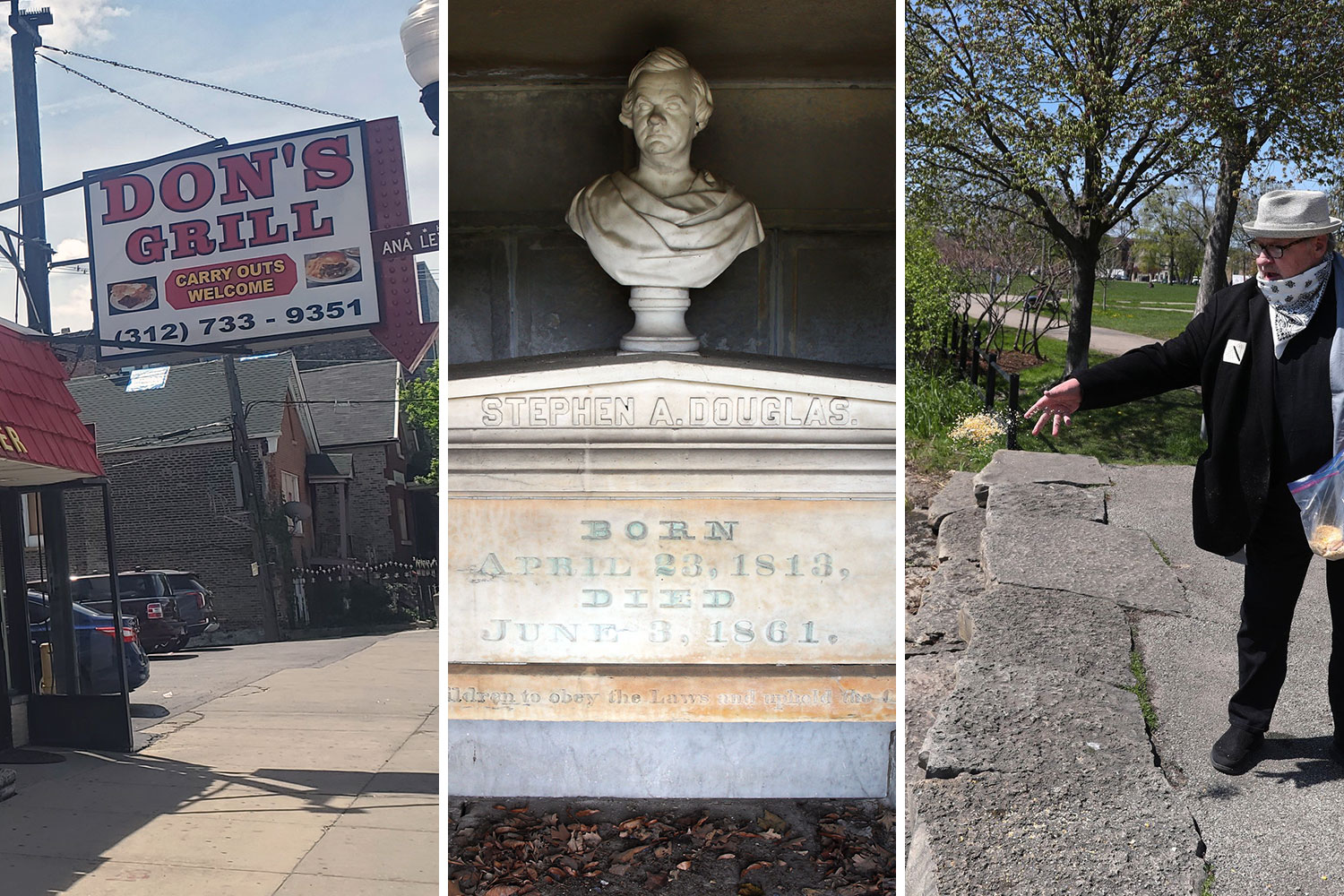In the second installment of the four-part series (you can read the first here), we again implore you to get out of your neighborhood and explore.
20. Hermosa: Hermosa Second Hand, 4224 W. Fullerton Ave.
The acrylic baseball cap reads, “IT USED TO BE WINE, WOMEN AND SONG. NOW IT’S BEER, THE OLD LADY AND TV.” You can buy it for $2.50 at this thrifters’ paradise, the junk closet of the Northwest Side. Children’s sneakers are $4.99, DVDs a dollar. If no one’s behind the counter, ring the bell. The owner will appear to ask “Que necesita?” I bought my son a birthday-themed Thomas the Tank Engine for $1.25. He won’t put it down.
21. Avondale: Small Bar, 2956 N. Albany Ave.
When I was thirsty for a beer on Labor Day, Small Bar was open and selling a $5 Begyle Blonde Draft special. I’ve seen smaller bars, but Small Bar is cozy enough. Its location on a residential corner, its pressed-tin ceiling, and its craft beer menu satisfy the hipster desire for both the old fashioned and the avant garde.
22. Logan Square: Chicago Diner, 2333 N. Milwaukee Ave.
Veganism is a movement in Logan Square. Logan Vegan dispenses dairy-free ice cream. Big Kids sells an Impossible Shiddy Burger. It started at Chicago Diner. They’ve been off meat since 1983, back when James Garner was still telling us beef was “real food for real people.” I usually skip past the seitan reuben and the black bean burger to order mashed potatoes and sauteed veggies. I don’t like the implication that meat tastes better than vegetables. I want vegetables that taste like vegetables.
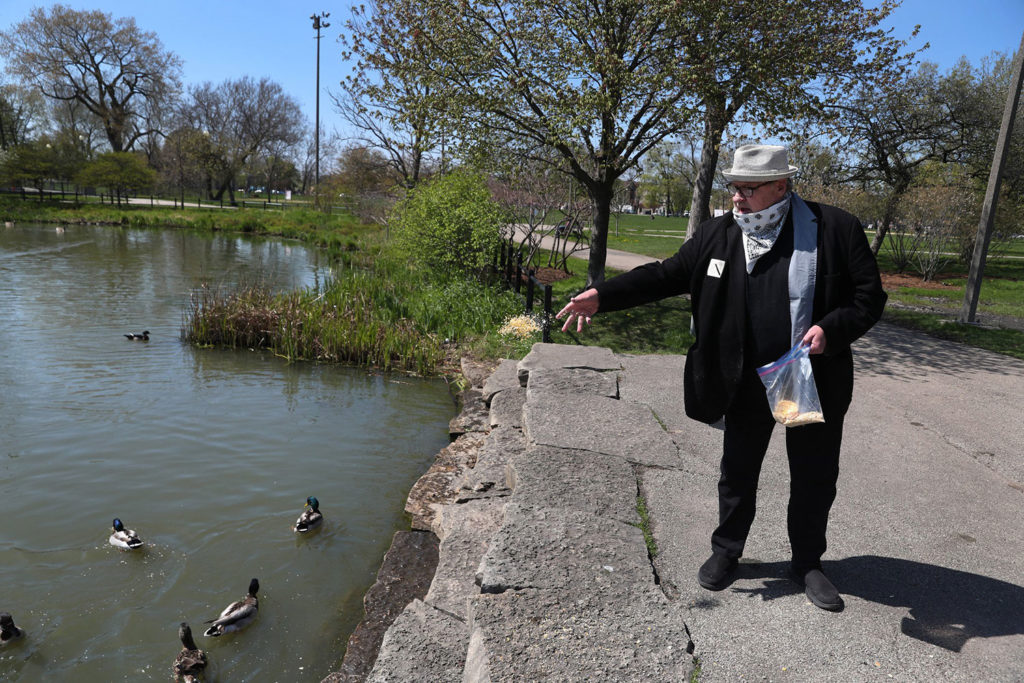
23. Humboldt Park: Humboldt Park Lagoon, 1440 N. Humboldt Blvd.
The swan boats have been beached for the season, but the lagoon is a beautiful place to contemplate autumn, and recall one of the zaniest episodes in recent Chicago history, when an alligator known as Chance the Snapper eluded capture for a week, before a trapper from Florida brought him in. Humboldt Park was designed by William Le Baron Jenney, more famous for designing the world’s first skyscraper, the Home Insurance Building. (Humboldt Park is officially in the West Town community area, but let’s ignore that befuddling mapping decision.)
24. West Town: Myopic Books, 1564 N. Milwaukee Ave.
The most important books here are just inside the front door, where Myopic displays its Chicago collection. Here you might find out-of-circulation classics about out-of-circulation local politicians: We Don’t Want Nobody Nobody Sent, by Milton L. Rakove, Lords of the Last Machine, by Bill Granger. Plus all the recent biographies of Nelson Algren, who lived less than a mile away, at 1523 W. Wabansia Ave.
25. Austin: Mars Chocolate North America, 2019 N. Oak Park Ave.
It looks like a resort, or a sanitarium, not a factory: a Spanish Renaissance building with a red-tiled roof, flying an American flag. It smells like a Three Musketeers bar, because that’s what’s produced inside. The Mars candy plant has its own Mars Metra stop, on the Milwaukee District West Line, for the convenience of its 280 employees. The 2000 block of Oak Park Avenue is honorary Milky Way. (Clev-er.) Sadly, Mars will close the plant in 2024 (although the building will remain, and possibly become a library). Inhale the scent of chocolate while this place is still making those fun-sized Snickers bars.
26. West Garfield Park: City Bricks Project Mural, Madison Street and Kostner Avenue
The figures painted on the side of the brick building are dispiriting. Life expectancy in West Garfield Park, 69 years. On the Near North Side, 82 years. Median household income here, $24,591. In Winnetka, $220,591. The disparities displayed on this mural inspired a documentary about the neighborhood, We Witness, which can be viewed in its entirety on WTTW’s website.
27. East Garfield Park: Willa Cather Elementary School, 2908 W. Washington Blvd.
It was a nice surprise, on a bicycle ride through the West Side, to pass a school named after one’s favorite novelist. Cather is known as a Great Plains author, but Song of the Lark (named for the Jules Adolphe Breton painting in the Art Institute) is one of the great Chicago novels, a timeless story of an ambitious young woman from Colorado who arrives in the city to train as an opera singer. Cather described springtime in Chicago as “windy, dusty, strident, shrill” — also timeless.
28. Near West Side: Sid’s Clothing and Hats, 609 W. Roosevelt Rd.
Most years on my birthday, I buy a hat at Sid’s, one of the few remaining men’s stores that can call itself a haberdashery. They’ve sold me two fedoras, and a herringbone flat cap. Ed Burke and Jesse Jackson also buy their hats at Sid’s — although not Lori Lightfoot. She prefers Goorin’s.
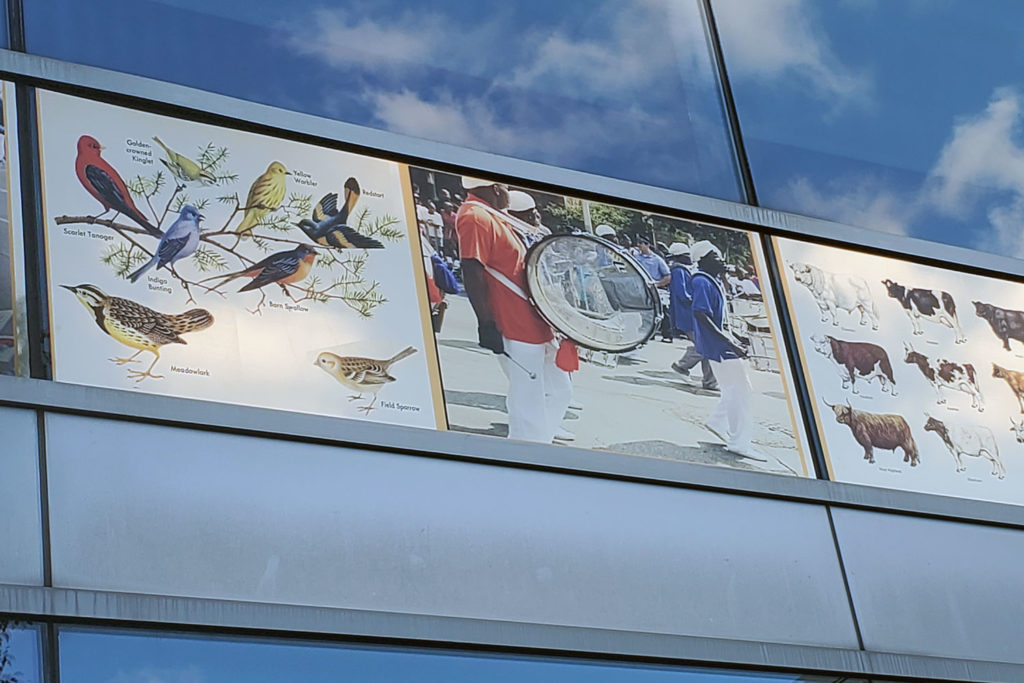
29. North Lawndale: BBF Family Services, 1512 S. Pulaski Rd.
Founded as the Better Boys Foundation by Joseph Kellman, a wealthy auto glass manufacturer who grew up in North Lawndale during its Jewish era, BBF provides tutoring, paid apprenticeships, parenting classes, reentry services, and health screenings. Last year, artist Kerry James Marshall completed a frieze encircling the building’s courtyard, consisting of photographs from the Bud Billiken Parade interspersed with “found images from various disciplines including astronomy, architecture, engineering, biology, chemistry, and medicine.” The work was designed specifically for BBF, because “there’s no other facility that fits with what he wants: the glass, the layout,” said Nathaniel Cole, director of outreach and community engagement. “Its message is about Black culture.” The public is welcome to view the frieze Monday through Friday from 10 a.m. to 2 p.m.
30. South Lawndale: Los Langostino’s Restaurant, 3059 S. Harding Ave.
Former 22nd Ward Ald. Ricardo Munoz has fallen from grace, sentenced to 13 months in prison for embezzling money from the City Council’s Progressive Reform Caucus, of which he was a member. Munoz is not all bad: he once suggested I take a date to Los Langostino’s, in the neighborhood better known as Little Village (because it didn’t want to be associated with North Lawndale). Langostino’s specializes in seafood, so I had a delicious Pescado Zarandeado (red snapper). Aldermen are good for dining recommendations — even the ones who go hinky.
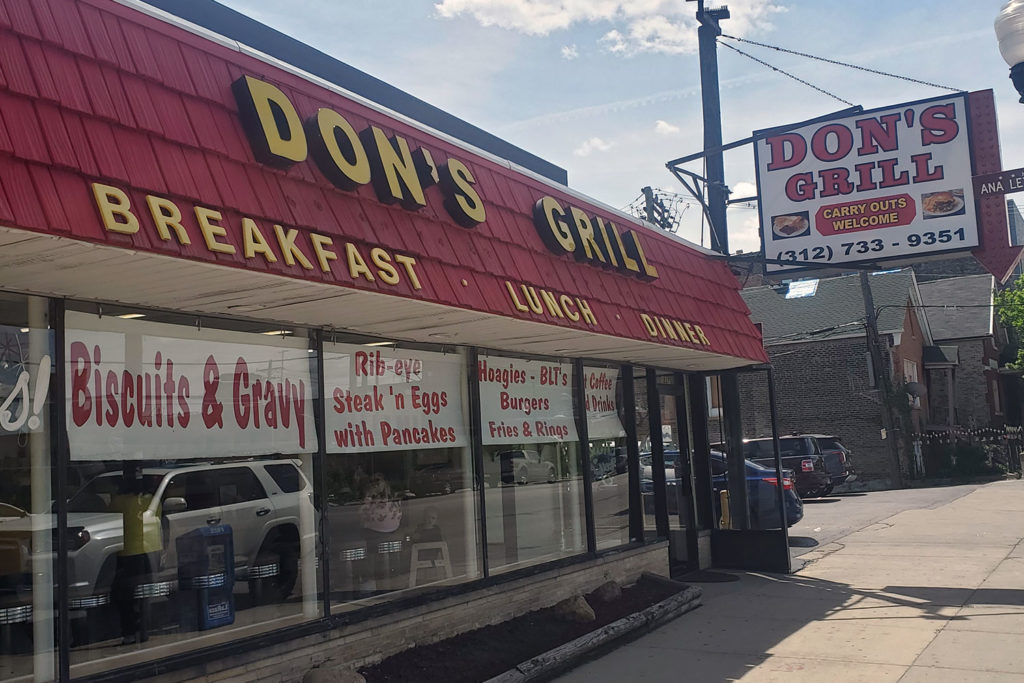
31. Lower West Side: Don’s Grill, 1837 S. Western Ave.
Don’s is the restaurant at the center of the Chicagoverse: it’s at the halfway point of Western Avenue, the street that divides the city. It’s a roadside diner that could satisfy the appetites of travelers on any road, even Route 66. Paper banners in the windows advertise the house specialties: biscuits and gravy, rib eye steak ’n eggs, hoagies. Inside, neighborhood families feast on fat, fluffy pancakes.
32. Loop: Lakeshore East Park, 450 E. Benton Pl.
Dedicated in 2005, Lakeshore East Park is a miniature Central Park, surrounded by a miniature Manhattan. St. Regis, Aqua, The Shoreham — some of Chicago’s newest, most expensive apartment towers — look down on its dog park, children’s playground, and manmade waterfalls drowning out whatever urban noise drifts into this sunken garden.
33. Near South Side: Railfanning on Roosevelt Rd.
According to Trains magazine, Roosevelt Road is the best place in the city to do some trainspotting. Maybe the best place in the nation, since Chicago is America’s railroad hub: 26 percent of freight traffic, 42 percent of intermodal traffic, and 11 Amtrak lines pass through Chicago. “Roosevelt Road is a wonderful place to watch passenger trains,” writes Trains. “More than 1,000 trains a day from Amtrak, Chicago Transit Authority, Metra, and South Shore cross the busy thoroughfare. The area provides a safe venue for watching and photographing trains in an urban environment.”
34. Armour Square: Wentworth Gardens, 3770 S. Wentworth Ave.
Every Chicagoan has been to Chinatown. Most have been to Sox Park. How many have walked through a housing project on a hot August day, and come across a girl and her father sitting in front of their two-story flat, selling flavored shaved ice in a paper cone, for just a dollar? It was a refreshing moment, in many ways.
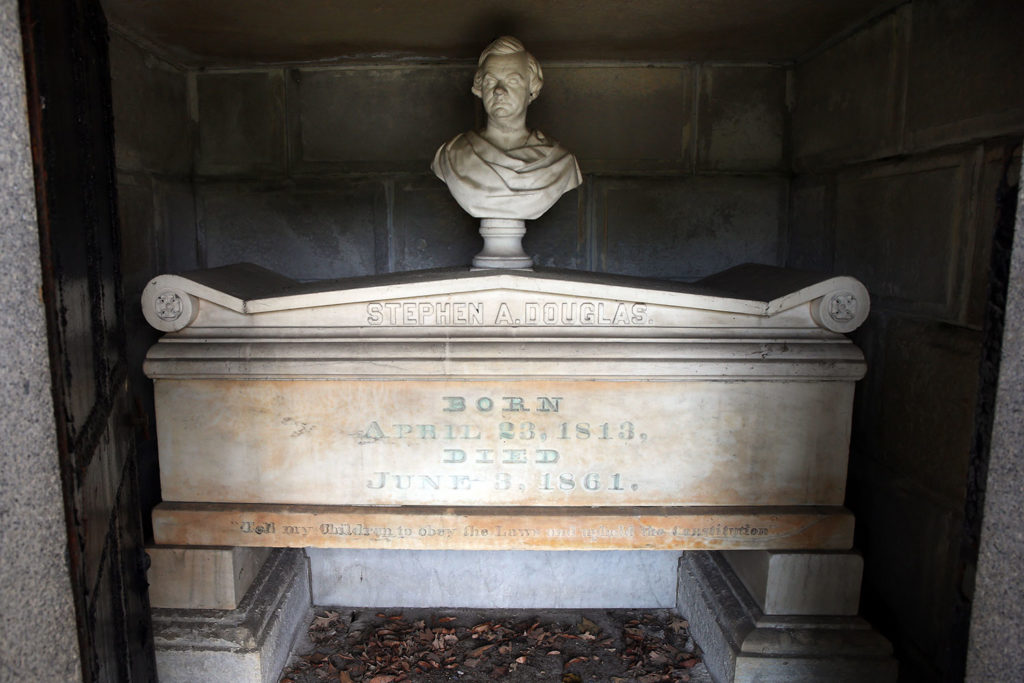
35. Douglas: Stephen A. Douglas Tomb, 636 E. 35th St.
Douglas is the neighborhood’s namesake: it’s on the site of his lakefront estate, Oakenwald. Douglas is remembered as Lincoln’s foil in the 1858 Senate debates, but he was also a believer in Chicago who made the city the nation’s rail hub, by passing the bill to bring the Illinois Central Railroad here. A 96-foot-tall granite column is topped with a statue of the Little Giant. At each of the four corners are female figures representing History, Justice, Eloquence and Illinois. Carved on the sarcophagus are Douglas’s last words, spoken as he was dying in Tremont House in 1861: “Tell my children to obey the laws and uphold the Constitution.”
36. Oakland: Sip & Savor, 528 E. 43rd St.
Ald. Sophia King, whose 4th Ward includes Oakland, recommended this Black-owned Bronzeville coffee shop to me. Entrepreneur Trez V. Pugh III owns four Sip & Savors on the South Side. There’s a lot of good coffee in Chicago, so it’s not worth a trip to Bronzeville just for Sip & Savor, but if you happen to be in Bronzeville, Sip & Savor is the place to drink coffee.
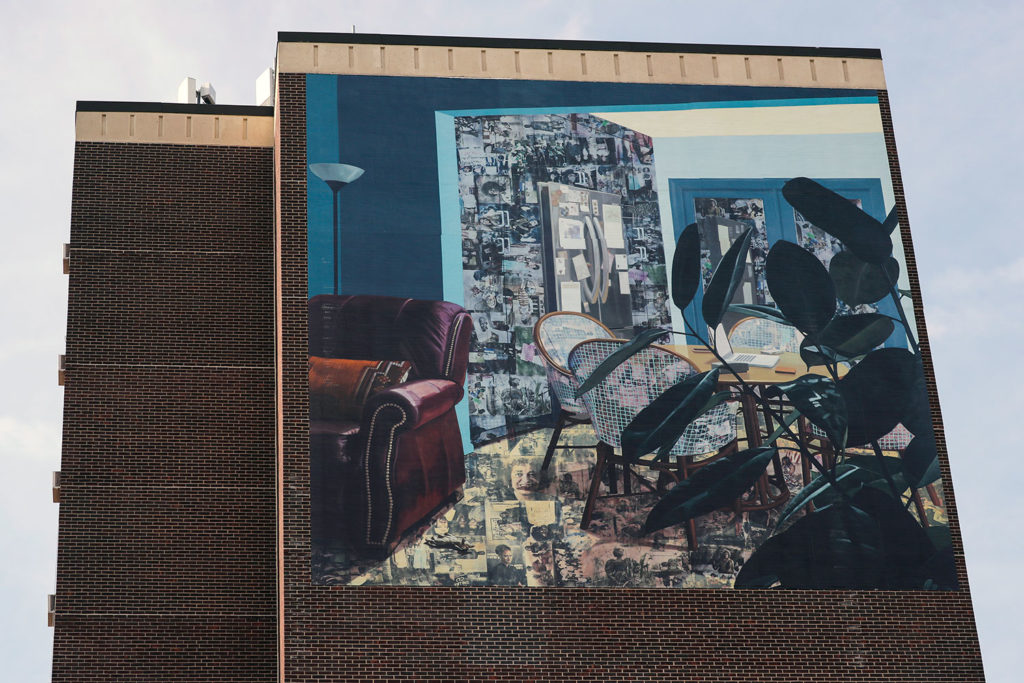
37. Fuller Park: Minnie Julia Riperton Apartments, 4250 S. Princeton Ave.
A housing project named after the Bronzeville native who sang the No. 1 hit “Lovin’ You” and gave birth to Saturday Night Live’s Maya Rudolph. What makes it worth visiting are a pair of murals by Njideka Akunyili Crosby, a MacArthur Genius grant-winning artist originally from Nigeria, depicting African-American family life. They bring color to the drab brick facade of a Chicago Housing Authority apartment house.
38. Grand Boulevard: Uncle J’s Bar B Que, 502 E. 47th St.
A hole-in-the-wall takeout barbecue joint, the menu is handwritten. The waiting area is a corridor long enough for five or six bodies. The cooks work behind smudged bulletproof glass. The barbecued chicken is the best in the city — when it’s available. Two visits ago, I was told, “No chicken today.” The last time I went: “We’re out of food. Come back in a couple hours.” Uncle J’s demands persistence, but it’s worth it.



